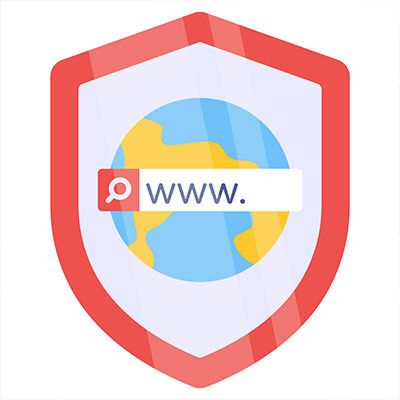The Internet is an incredible asset, and while it connects the world and allows organizations to innovate in previously unseen ways, it houses a dark side that is difficult to ignore. We’re talking, of course, about hacking. It’s interesting to learn about how laws are interpreted as they relate to hacking, and the consequences are dire if you get caught.
BSGTech Blog
Google is a staple in pretty much any office, even if only as a search engine. How can you make sure you’re getting the results you want to see? One way you can do so is by adjusting your Google searches in various ways to refine the results you get. Here’s how you can do it without sifting through dozens of returned results that are useless or irrelevant.
For those of you who are fans of American football, you are familiar with the interception. When your team’s quarterback throws a pass that ends up in the other team's possession, it can be one of the most frustrating plays for a fan. Let’s discuss the man-in-the-middle (MitM) attack, which is effectively a hacker intercepting data as it is passed from one person to another. Let’s get into it.
In just a short time, social media has become pivotal to most people’s personal, professional, and social lives. There are significant benefits to using social media for various tasks, but the adverse effects are pretty pronounced and hard to ignore at the same time. In fact, it might be a good idea to take a break now and again, called a social media detox. Let’s discuss how you can make this break work for you so that you can return to enjoying your accounts after the detox.
Today, technology stands out for its remarkable pace of growth and continuous innovation. I really mean continuous. Nearly everything that has been developed is eventually improved upon, until something new comes along and replaces it. If an improvement is good enough, especially if it is seen as indispensable, it will often transcend the initial invention. This has happened many times over the years.
For the past six months, the social media giant Meta (AKA Facebook) has attempted to take advantage of the perceived instability at X (AKA Twitter) and create a microblogging community in the same vein, called Threads. Today, we thought we would take a look at Threads and how it is similar to X, and how it aims to pull users away from the microblogging giant.
How far would your business go to protect itself from threats? One of the largest technology companies in the world, Google, is going as far as possible without compromising the productivity of its employees: blocking the Internet entirely. How will Google get away with doing this while retaining efficiency? Read on and find out.
Web-based, online threats pose significant danger for businesses today, which makes it all the more important that you take steps to protect your organization. Google is taking its own protections to the extreme, recently launching a pilot program where the Internet is largely unavailable to its workers.
The world of network security is vast and complicated, even without all of the misinformation out there about how to keep your business safe and your accounts secure. One particular facet of network security misinformation comes in the form of web browsers, or rather, myths that people think about how they are used which could leave them vulnerable to hacking attacks.
We’re here today to address three of the most common myths about browser security that we think you’ll be interested to know.
Most everyone uses a search engine, whether it’s Google or one of the others out there; although the statistics about whether or not you use Google are more than a little skewed in Google’s favor. Why is it such a popular tool, and what other options are out there for the enterprising Internet user?
We can say all we like about how clicking on the wrong link could spell disaster for your business, but the unfortunate truth is that eventually you might encounter a situation where you are suspicious of a link that you simply aren’t sure of. In cases like these, you can use the following tools to test a link’s legitimacy before committing to it.
Most modern businesses depend on wireless Internet connectivity (Wi-Fi) to a certain extent. Do you know what it means when we talk about the various speeds of routers, the data they can transfer, and so on? Today, we wanted to clear up some facts about dual-band routers that your business might find handy in the future.
Small businesses depend on a reliable Internet connection to remain competitive, and without the appropriate bandwidth, staff productivity and communications can suffer. To keep your business from suffering from a lack of bandwidth, we recommend that you read today’s blog article which discusses the intricacies of bandwidth in business computing.




















